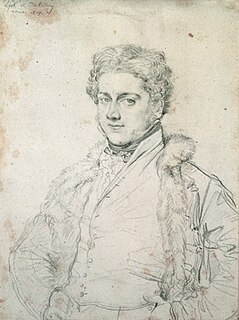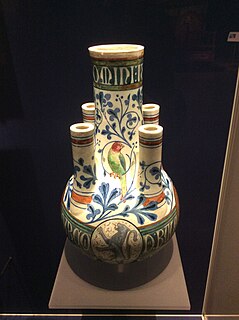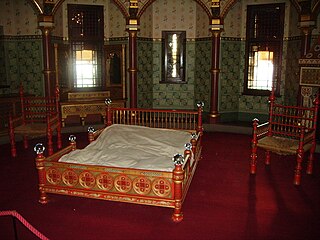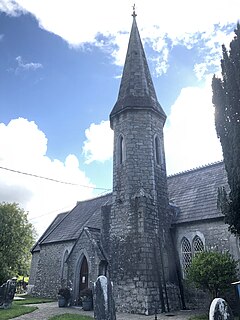The year 1881 in architecture involved some significant architectural events and new buildings.
The year 1848 in architecture involved some significant events.
The year 1858 in architecture involved some significant events.

Charles Robert Cockerell was an English architect, archaeologist, and writer. He studied architecture under Robert Smirke. He went on an extended Grand Tour lasting seven years, mainly spent in Greece. He was involved in major archaeological discoveries while in Greece. On returning to London he set up a successful architectural practise. Appointed Professor of Architecture at the Royal Academy of Arts he served in that position between 1839 and 1859. He wrote many articles and books on both archaeology and architecture. In 1848 he became the first recipient of the Royal Gold Medal.

Saint Fin Barre's Cathedral is a Gothic Revival three-spire cathedral in the city of Cork, Ireland. It belongs to the Church of Ireland and was completed in 1879. The cathedral is located on the south side of the River Lee, on ground that has been a place of worship since the 7th century, and is dedicated to Finbarr of Cork, patron saint of the city. It was once in the Diocese of Cork; it is now one of the three cathedrals in the Church of Ireland Diocese of Cork, Cloyne and Ross, in the ecclesiastical province of Dublin.

William Burges was an English architect and designer. Among the greatest of the Victorian art-architects, he sought in his work to escape from both nineteenth-century industrialisation and the Neoclassical architectural style and re-establish the architectural and social values of a utopian medieval England. Burges stands within the tradition of the Gothic Revival, his works echoing those of the Pre-Raphaelites and heralding those of the Arts and Crafts movement.
The year 1829 in architecture involved some significant events.
The year 1854 in architecture involved some significant events and new buildings.

Sir Thomas Deane was an Irish architect. He was the father of Sir Thomas Newenham Deane, and grandfather of Sir Thomas Manly Deane, who were also architects.

Charles Henry Driver FRIBA was a significant British architect of the Victorian era, with a reputation for pioneering use of ornamental iron work for which he was seen as a leading authority.
The year 1775 in architecture involved some significant events.
Events from the year 1878 in Ireland.
Andrew Egan was an Irish architect and builder.

Holy Trinity Church, Templebreedy is a parish church of the Church of Ireland close to Crosshaven, in County Cork, Ireland. It was designed by William Burges, who also designed Saint Fin Barre's Cathedral. The building opened in 1868 and remains an active parish church.

Charles Handley-Read was an architectural writer and collector and the first serious 20th-century student of the work of William Burges, "a pioneer in Burges studies who was the first to assess the historical brilliance of Burges as gesamtkunstwerk architect and designer."

Carrigrohane is a village and civil parish situated on the south bank of the River Lee to the west of the city of Cork in Ireland. It is connected by the Carrigrohane Straight, 4 miles (6.4 km) west of Cork and is also in the northeastern part of Ballincollig. It contains St Peter's Church of the Resurrection. In 1837, it had a population of 1921 inhabitants. The civil parish is almost evenly split between the baronies of Muskerry East to the west and the Barony of Cork to the east.

Thomas Nicholls was an English sculptor.

John Starling Chapple (1840–1922) was a stonemason and architect who worked as office manager for William Burges.

William Gualbert Saunders, known as W Gualbert Saunders, was an English designer of stained glass and founder of the stained glass manufacturers Saunders & Co. He established his manufactury at Endell Street, Covent Garden, in 1859 and subsequently worked with many of the foremost English stained glass designers.

The Church of St Peter, Carrigrohane, is a Gothic Revival church in Cork, Ireland. It belongs to the Church of Ireland and was constructed in 1854, and extended by William Burges in 1865-68. The church is located on Church Hill, Carrigrohane, to the west of Cork city. It stands on the site of an earlier church, and is dedicated to Saint Peter. Along with the Church of the Resurrection and St Senan's Church it is part of the Carrigrohane Union of Parishes in the Diocese of Cork, Cloyne, and Ross.












